So BUTTERFLY PEA was history. However, there is a myriad of natural soap colorant waiting to be explored.
RED YEAST is pretty interesting because they were used as a red food coloring in local cuisine. In soaps, they turned out pastel peach.
|
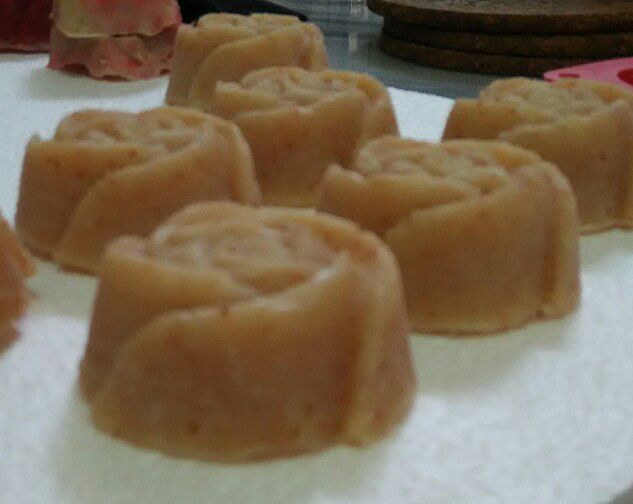 |
| Red Yeast |
|
SESSILE JOYWEED which was supposedly pink did not have the same effect. TURMERIC left the soap all orangey.
And then, there were COMMERCIAL FOOD COLORING, some in liquid form, others powdered.
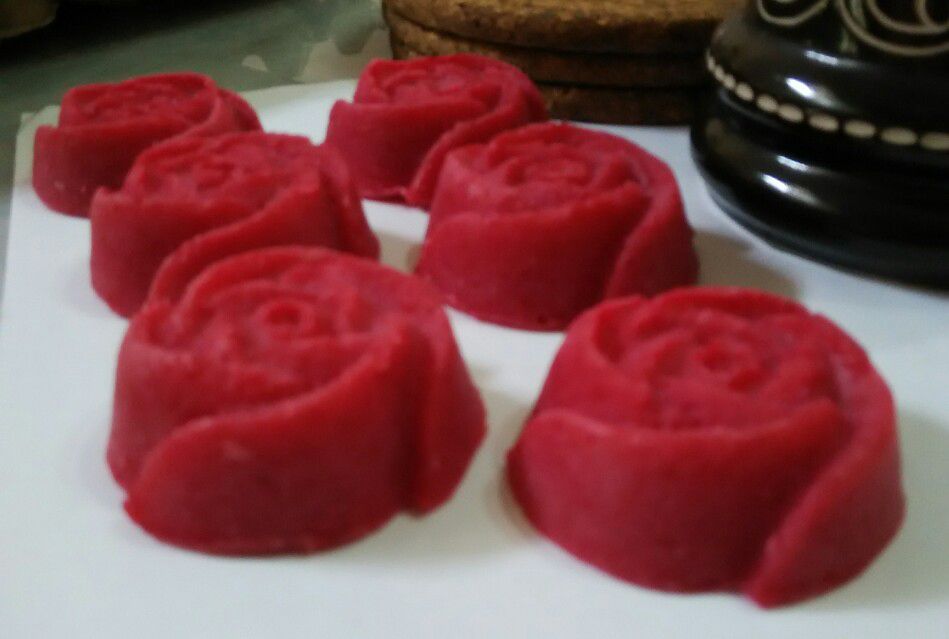 |
| Powdered Food coloring |
|
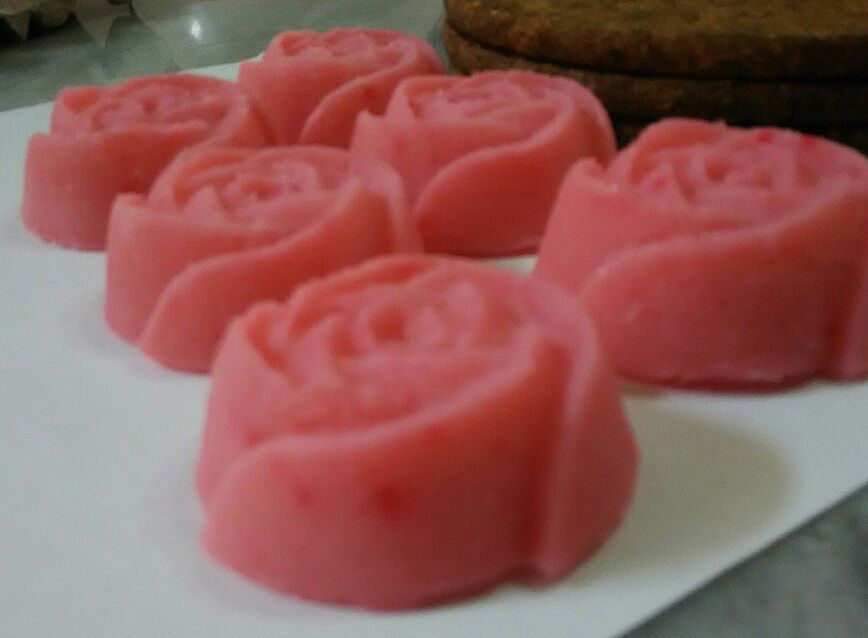 |
| Liquid Food Coloring |
|
I was informed that food coloring were not pH stable and that some were wont to "morph". (whatever that meant) Furthermore, with the long curing period in cold process soap, will the colors keep? Still, I was at the experimental stage so I guess for now, it's anything goes.
|
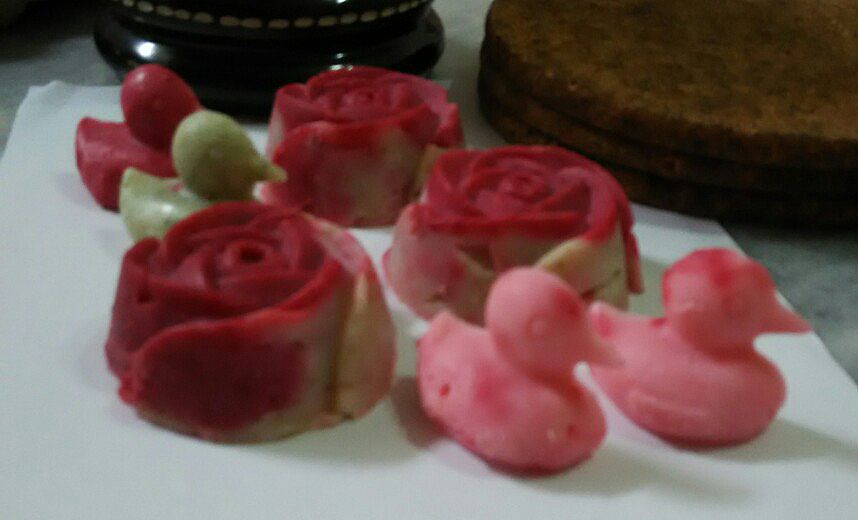 |
| Red Yeast / Food Coloring |
|
Next, I experimented with some pretty expensive Australian NATURAL DYE. These colors were extracted from plants and minerals and came in a pack of four small vials.
In the soap on the right, you will see a wavy band of purple cutting right across the middle ... if you ... like me, have any sense of imagination.
|
|
If brown is your color, you won't be short of natural browns. JAVANESE LULUR, COFFEE, COCOA, CINNAMON as soap additives made them brown. Even GREEN TEA had this effect, which was awkward because I had expected GREEN TEA to be ... well ... green!
 |
| Green tea |
|
 |
| Bon Coffee / Powdered Rice |
|
| BAMBOO CHARCOAL provided a deep contrast and is a dream to play around with. |
 |
| Bamboo Charcoal |
|
For natural green, my favorite colorants are MORINGA, MINT, KAFFIR LIME, SCREW PINE and SPIRULINA.
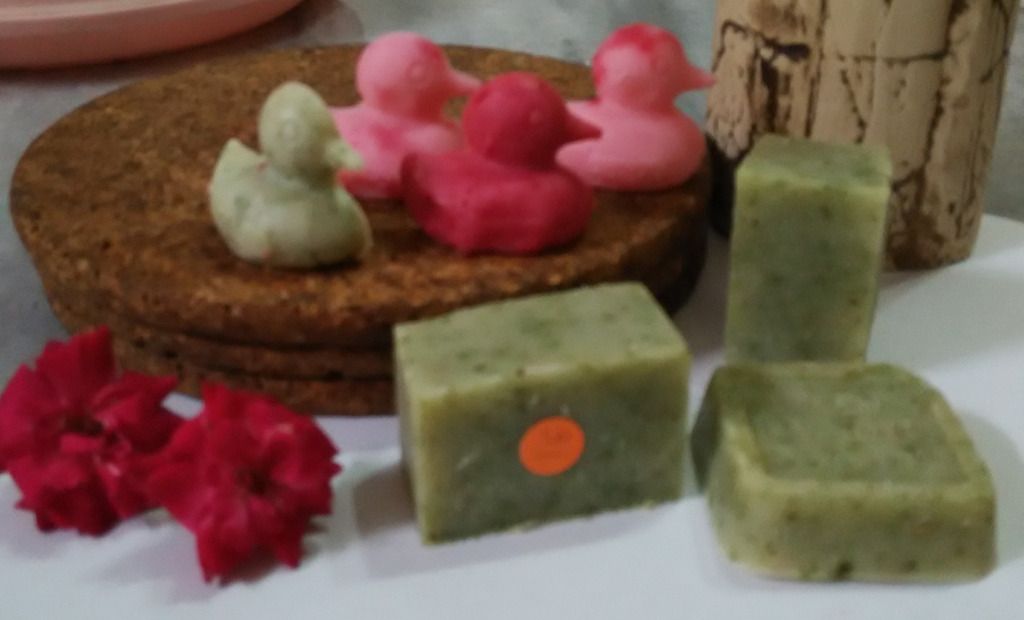 |
| Kaffir Lime |
|
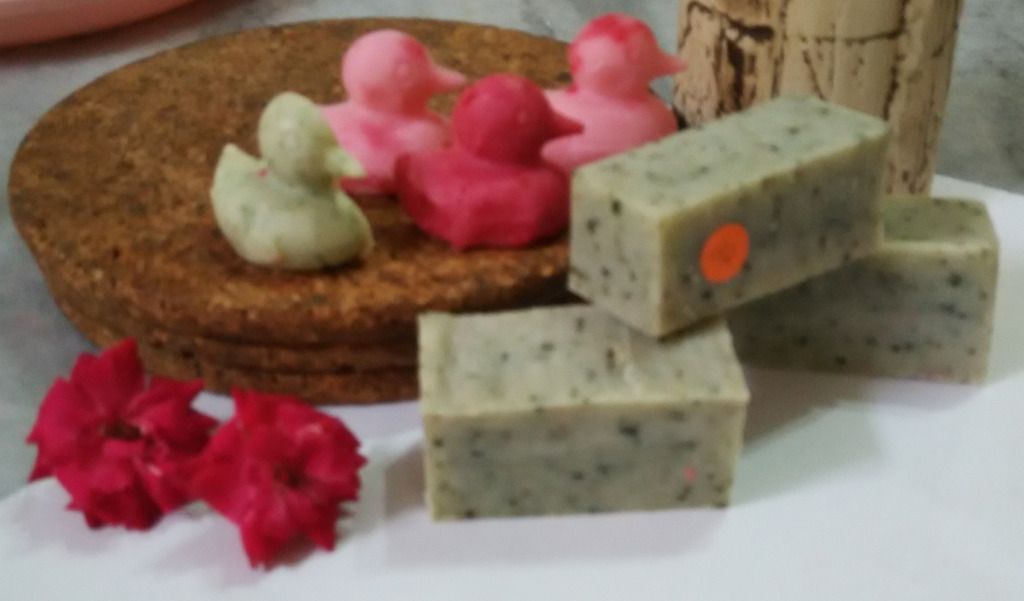 |
| Spirulina |
OREGANO soaps were dirty green depending on how much of the herb went into the soap.
|
 |
| Screwpine / Powdered Goat Milk |
|
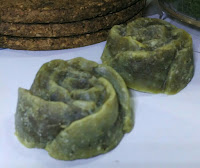 |
| Moringa |
|
Meanwhile, the blues remained elusive. A little research was in order so I braced myself for the laborious enterprise. Oh bother! The blues had something to do with purple and both were linked to green by a chain of pH values.
A paradigm shift was in order. Purple is the new hot shot. Off to the grocery I jogged with a bunch of MANGOSTEENS in my head. They're purple, aren't they? I bought some, dehydrated the outer pulp and pounded them on a mortar. They were extremely hard and I did not want to snap my blender blade. After the pounding, they were grounded in a commercial blender. Finally, mangosteen powder in the jar.
I know. That powder isn't purple but the pigment's in there somewhere.
|
 |
Mangosteen
|
|
So I proceeded with the next batch of mangosteen soap. They turned out pale brownish green. What went wrong, for crying out loud? Where did the purple go?
|
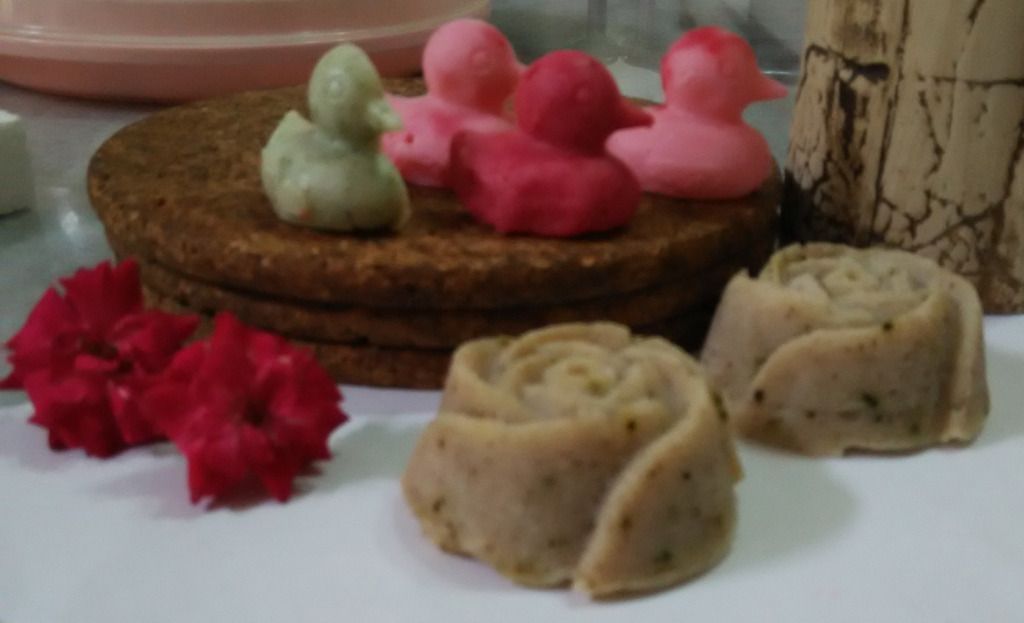 |
| mangosteen |
|
It was imperative to learn where the purple pigment was stored. From here I discovered that the outer husk of the mangosteen is called the Pericarp. This pericarp consists of the outer exocarp, the inner mesocarp and the innermost endocarp. Our purple pigment is stored in the exocarp. I'll need to seriously look into breaching the exocarp.
Not to be routed without a fight, I turned my next attention to RED CABBAGE, which as you know is purple instead of red. When you stir fry them with eggs, the eggs turn blue. (as in the blobs of blue on the right)
So the red cabbage which is purple was peeled off, dehydrated and crushed into powder. I did not have enough in the blender so some parts were in chunks.
|
 |
| Red cabbage tossed with strips of omelette |
|
 |
Red Cabbage
|
|
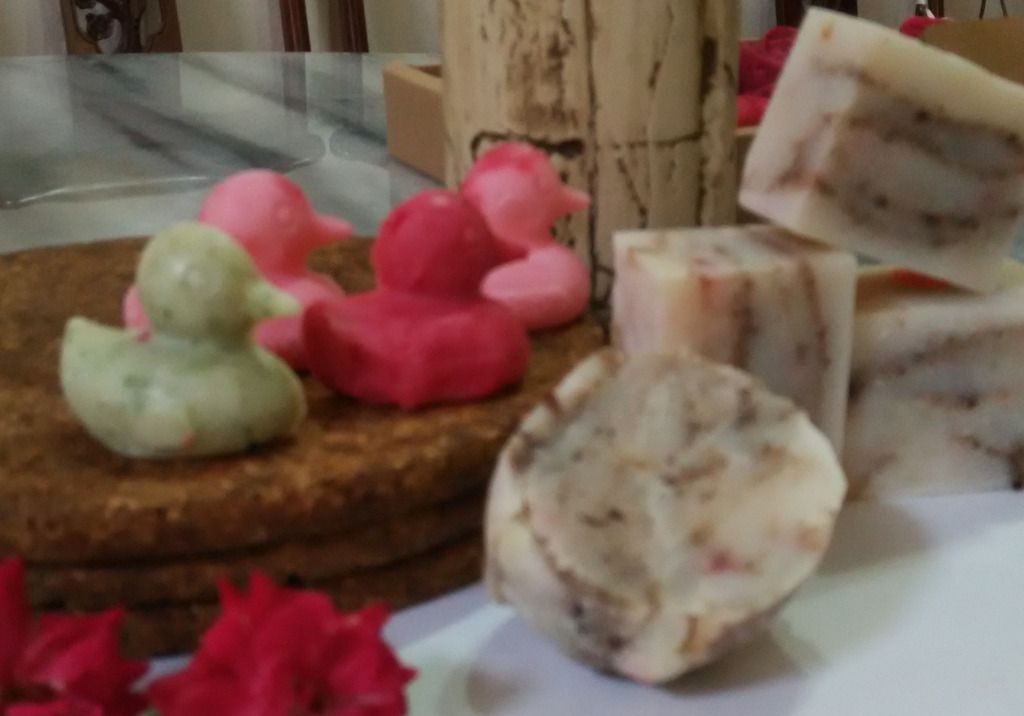 |
Red Cabbage
|
|
I finally found my purple soap. Will you just look at that color on the right? It is unmistakably purple. If you look hard enough, you will see tiny streaks of green and blue. That is due to the pH factor.
|
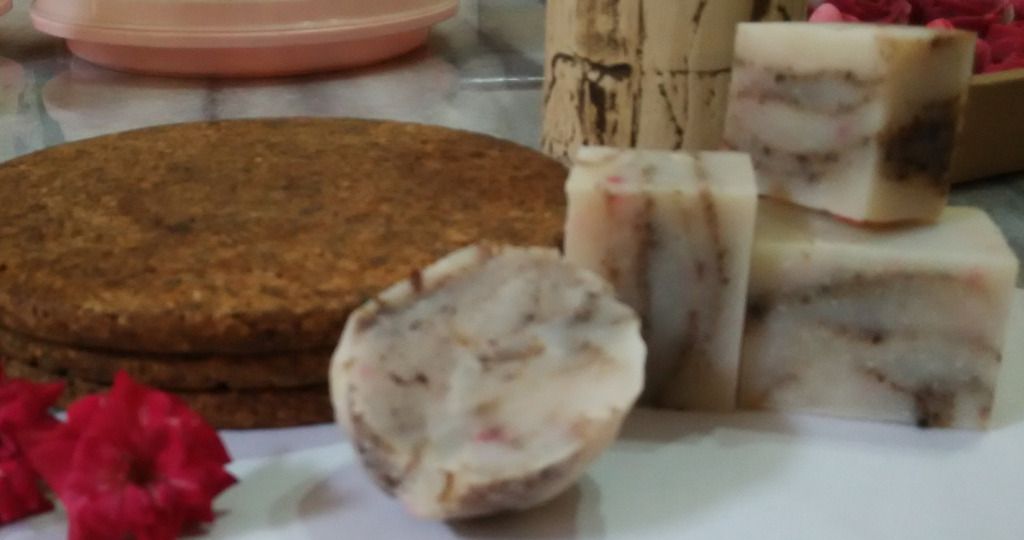 |
| Red Cabbage |
|
 |
| Little Duckies |



















A WORD ABOUT THE RED CABBAGE SOAP
ReplyDeleteNow the soap with the red cabbage was made some 10 months ago. Although it stank at the beginning of the curing period, the smell diminished progressively over time. The soap was cling wrapped at the end of the curing period (3 months) and recently tested. Surprise, surprise! There wasn't any foul rotting cabbage smell, only the mild fragrance left behind by the essential oil.